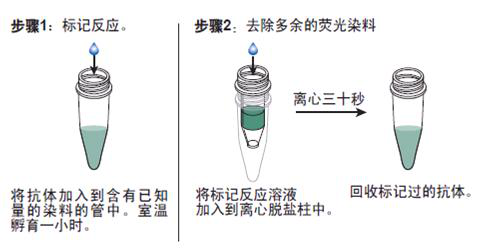
|

| 产地 | 进口、国产 |
| 品牌 | 上海莼试 |
| 保存条件 | Store at -20 °C |
| 货号 | CS12201 |
| 应用范围 | WB=1:100-500 ELISA=1:500-1000 IP=1:20-100 IHC-P=1:100-500 IHC-F=1:100-500 IF=1:100-500 |
| CAS编号 | |
| 抗体名 | Anti-SERPINA12/Vaspin |
| 克隆性 | 是 |
| 靶点 | 详见说明书 |
| 适应物种 | 详见说明书 |
| 形态 | 详见说明书 |
| 宿主 | 详见说明书 |
| 亚型 | IgG |
| 标识物 | 详见说明书 |
| 浓度 | 1mg/1ml% |
| 免疫原 | KLH conjugated synthetic peptide derived from human SERPINA12/Vaspin |
产品订购信息:
英文名称 Anti-SERPINA12/Vaspin
中文名称 内脏脂肪组织源性丝氨酸蛋白酶抑制蛋白抗体费用
别 名 OL 64; OL-64; OL64; Serine (or cysteine) proteinase inhibitor clade A (alpha 1 antiproteinase antitrypsin) member 12 ; Serpin A12; Serpin A12 precursor; Serpin peptidase inhibitor clade A (alpha 1 antiproteinase antitrypsin) member 12; Serpina12; SPA12_HUMAN antibody Vaspin; Visceral adipose specific serpin; Visceral adipose tissue derived serine protease inhibitor; Visceral adipose tissue-derived serine protease inhibitor; Visceral adipose-specific serpin.


浓 度 1mg/1ml
规 格 0.2ml/200μg
抗体来源 Rabbit
克隆类型 polyclonal
交叉反应 Human, Mouse, Rat, Dog, Pig, Cow, Horse, Rabbit
产品类型 一抗
研究领域 心 细胞生物 免疫学 神经生物学 信号转导
蛋白分子量 predicted molecular weight: 45kDa
性 状 Lyophilized or Liquid
免 疫 原 KLH conjugated synthetic peptide derived from human SERPINA12/Vaspin
亚 型 IgG
纯化方法 affinity purified by Protein A
储 存 液 Preservative: 15mM Sodium Azide, Constituents: 1% BSA, 0.01M PBS, pH 7.4
内脏脂肪组织源性丝氨酸蛋白酶抑制蛋白抗体费用 产品应用 WB=1:100-500 ELISA=1:500-1000 IP=1:20-100 IHC-P=1:100-500 IHC-F=1:100-500 IF=1:100-500
(石蜡切片需做抗原修复)
not yet tested in other applications.
optimal dilutions/concentrations should be determined by the end user.
保存条件 Store at -20 °C for one year. Avoid repeated freeze/thaw cycles. The lyophilized antibody is stable at room temperature for at least one month and for greater than a year when kept at -20°C. When reconstituted in sterile pH 7.4 0.01M PBS or diluent of antibody the antibody is stable for at least two weeks at 2-4 °C.
Important Note This product as supplied is intended for research use only, not for use in human, therapeutic or diagnostic applications.
产品介绍 May modulates insulin action conceivably only in the presence of its yet undefined target proteases in white adipose tissues.
Serpins are the largest and most diverse family of protease inhibitors. Most serpins control proteolytic cascades, certain serpins do not inhibit enzymes, but instead perform diverse functions such as storage (ovalbumin, in egg white), hormone carriage proteins (thyroxine-binding globulin, cortisol-binding globulin) and tumor suppressor genes (maspin). Most inhibitory serpins target chymotrypsin-like serine proteases. These enzymes are defined by the presence of a nucleophilic serine residue in their catalytic site. Some serpins inhibit other classes of protease. A number of such serpins have been shown to target cysteine proteases. These enzymes differ from serine proteases in that they are defined by the presence of a nucleophilic cysteine residue, rather than a serine residue, in their catalytic site.
SerpinA12, also known as OL-64, Visceral adipose tissue-derived serine protease inhibitor, Vaspin, Visceral adipose-specific serpin and SERPINA12, is a secreted protein which belongs to the serpin family. SerpinA12 / Vaspin is expressed in visceral adipose tissues. It may modulates insulin action conceivably only in the presence of its yet undefined target proteases in white adipose tissues. SerpinA12 / Vaspin may be the compensatory molecule in the pathogenesis of metabolic syndrome and SerpinA12 / Vaspin recombinant protein or vaspin-mimicking agents such as vaspin analogs, antibodies or small molecule agents may be the link to drug discovery and development.
Function : May modulates insulin action conceivably only in the presence of its yet undefined target proteases in white adipose tissues.
Subcellular Location : Secreted.
Tissue Specificity : Expressed in visceral adipose tissues.
Similarity : Belongs to the serpin family.
Database links :
UniProtKB/Swiss-Prot: Q8IW75.1
Entrez Gene: 145264 Human
SwissProt: Q8IW75 Human
Unigene: 99476 Human

应激诱导磷蛋白1 多克隆抗体 STIP1 Polyclonal Antibody 700/30ul#1540/100ul#2520/200ul
丝氨酸/苏氨酸蛋白激酶25 多克隆抗体 STK25 Polyclonal Antibody 700/30ul#1540/100ul#2520/200ul
丝氨酸/苏氨酸蛋白激酶3 多克隆抗体 STK3 Polyclonal Antibody 700/30ul#1540/100ul#2520/200ul
丝氨酸/苏氨酸蛋白激酶31 多克隆抗体 STK31 Polyclonal Antibody 700/30ul#1540/100ul#2520/200ul
丝氨酸/苏氨酸蛋白激酶38 多克隆抗体 STK38 Polyclonal Antibody 700/30ul#1540/100ul#2520/200ul
α2C-AR肾上腺素能受体抗体 抑制基因LUCA15抗体
中心体蛋白AZI1抗体 抑制基因LPP2抗体
ADCK5蛋白抗体 抑制基因LATS1抗体
细胞分裂周期蛋白5抗体 抑制蛋白抗体
β淀粉样肽/Aβ42抗体 抑制蛋白18抗体
整合素β3 多克隆抗体 Integrin β3 Polyclonal Antibody 700/30ul#1540/100ul#2520/200ul
整合素β3 多克隆抗体 Integrin β3 Polyclonal Antibody 700/30ul#1540/100ul#2520/200ul
整合素β4 多克隆抗体 Integrin β4 Polyclonal Antibody 700/30ul#1540/100ul#2520/200ul
整合素β5 多克隆抗体 Integrin β5 Polyclonal Antibody 700/30ul#1540/100ul#2520/200ul
Involucrin 多克隆抗体 Involucrin Polyclonal Antibody 700/30ul#1540/100ul#2520/200ul
小芸木Micromelum sp. Prudomestin 3,5,7-三羟基-8,4'-二甲氧基黄酮 3443-28-5 C17H14O7 ≥97%
辽东楤木皂苷VLicodongcrclicscponinVHPLC≥98%,20mg/支
巴利森苷A Coniferin 62499-28-9 20mg HPLC≥98% 巴利森苷A_62499-28-9用于含量...
含量测定泮托拉唑100575-200903常温,避光100mg
Low-Density Polyetxylene 低密度聚标准品9002-
内脏脂肪组织源性丝氨酸蛋白酶抑制蛋白抗体费用25038-59-9 聚对本二价酸乙二酯标准品 3 sips
云南松Pinus yunnanensis (7S,8R)-3′,4,9,9′-四轻基-3-甲氧基-7,8-二轻本并-1′-丙醇基新木脂素 75775-36-9 C19H22O6 ≥95% 甲本噻嗪 杂质E(Y0000159
异丙草安标准品 嗪草同脱氧腺苷标 DADK嗪草同标准品
Clenberol Related Compound B克伦特罗相关物质B标准品37148-49-510mg克伦特罗相关物质B标准品
黄柏碱 6873-13-8 HPLC≥98%;20mg 订购|咨询

抗体的生物素化标记实验要点:
1. 内脏脂肪组织源性丝氨酸蛋白酶抑制蛋白抗体费用 如在反应混合液中有叠氮钠或游离氨基存在,会抑制标记反应。因此,蛋白质在反应前要对 0.1mol/L碳酸氢钠缓冲液或0.5mol/L硼酸缓冲液充分透析;
2.所用的NHSB及待生物素化蛋白质之间的分子比按蛋白质表面的ε-氨基的密度会有所不同,选择不当则影响标记的效率,应先用几个不同的分子比来筛选最适条件;
3.用NHSB量过量也是不利的,抗原的结合位点可能因此被封闭,导致抗体失活;
4.由于抗体的氨基不易接近可能造成生物素化不足,此时可加入去污剂如 Triton x-100, Tween20等;
5.当游离ε-氨基(赖氨酸残基的氨基)存在于抗体的抗原结合位点时,或位于酶的催化位点时,生物素化会降低或损伤抗体蛋白的结合力或活性;
6.生物素还可能与不同的功能基团,如羰基、氨基、巯基、异咪唑基及苯酚基,也可与糖基共价结合;
7.交联反应后,应充分透析,否则,残余的生物素会对生物素化抗体与亲和素的结合产生竞争作用;
8.在细胞的荧光标记实验中,中和亲和素的本底低,但由于链霉亲和素含有少量正电荷,故对某些细胞可导致高本底。
抗体的鉴定:
1)内脏脂肪组织源性丝氨酸蛋白酶抑制蛋白抗体费用 抗体的效价鉴定:不管是用于诊断还是用于,制备抗体的目的都是要求较高效价。不同的抗原制备的抗体,要求的效价不一。鉴定效价的方法很多,包括有试管凝集反应,琼脂扩散试验,酶联免疫吸附试验等。常用的抗原所制备的抗体一般都有约成的鉴定效价的方法,以资比较。如制备抗抗体的效价,一般就采用琼脂扩散试验来鉴定。
2)抗体的特异性鉴定:抗体的特异性是指与相应抗原或近似抗原物质的识别能力。抗体的特异性高,它的识别能力就强。衡量特异性通常以交叉反应率来表示。交叉反应率可用竞争抑制试验测定。以不同浓度抗原和近似抗原分别做竞争抑制曲线,计算各自的结合率,求出各自在IC50时的浓度,并按公式计算交叉反应率。
如果所用抗原浓度IC50浓度为pg/管,而一些近似抗原物质的IC50浓度几乎是无穷大时,表示这一抗血清与其他抗原物质的交叉反应率近似为0,即该血清的特异性较好。
3)抗体亲和力:是指抗体和抗原结合的牢固程度。亲和力的高低是由抗原分子的大小,抗体分子的结合位点与抗原决定簇之间立体构型的合适度决定的。有助于维持抗原抗体复合物稳定的分子间力有氢键,疏水键,侧链相反电荷基因的库仑力,范德华力和空间斥力。亲和力常以亲和常数K表示,K的单位是L/mol。抗体亲和力的测定对抗体的筛选,确定抗体的用途,验证抗体的均一性等均有重要意义。